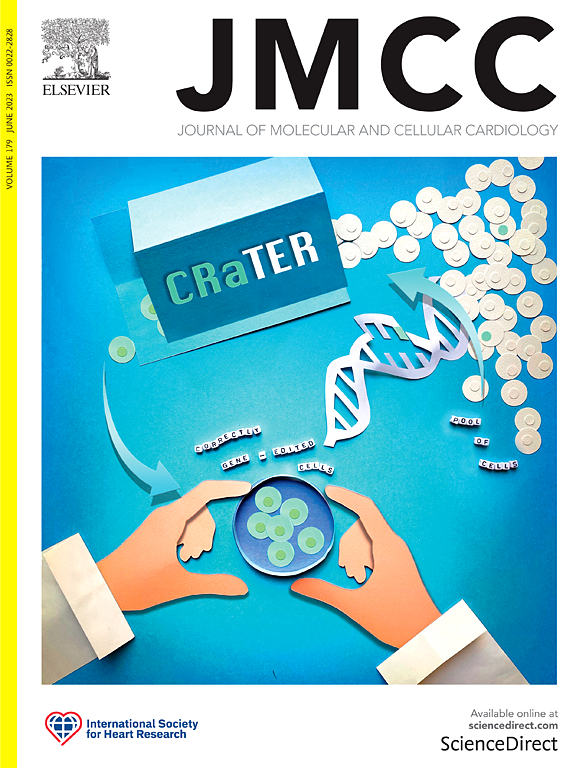Time-restricted feeding mediated synchronization of circadian rhythms to sustain cardiovascular health
IF 4.7
2区 医学
Q1 CARDIAC & CARDIOVASCULAR SYSTEMS
引用次数: 0
Abstract
Circadian rhythm is critical in maintaining metabolic homeostasis, including cardiac health, with disruptions often leading to adverse cardiac outcomes. Time-restricted feeding/eating (TRF/TRE) is a dietary approach that limits food intake to specific hours during an organism's active phase, daytime for diurnal animals and nighttime for nocturnal ones. This strategy has shown promise in realigning circadian rhythms and reducing the negative effects of circadian disruption on heart function. This review examines the intricate relationship between circadian rhythms and cardiac health, highlighting the molecular mechanisms governed by central and peripheral clocks. We discuss how circadian misalignment contributes to cardiovascular disease and explore how TRF/TRE can restore circadian synchronization, particularly in the context of lipid metabolism, gene expression, and other physiological processes essential for heart function. The review also examines the impact of TRF/TRE on cardiac renovation, particularly under conditions of circadian disruption associated with cardiovascular and cardiometabolic disorders. We further explore potential molecular mechanisms, including the modulation of clock genes and lipid metabolic pathways, such as diacylglycerol O-acyltransferase 2 (DGAT2), that underpin the cardioprotective effects of TRF. By consolidating findings from genetic and translational animal models and human studies, we underscore the promise of TRF/TRE in improving cardiac outcomes and propose areas for future research. The potential of TRF/TRE as a therapeutic intervention for cardiovascular disease warrants further investigation, particularly in understanding its long-term effects on cardiac health and its integration into clinical practice.
限时喂养介导的昼夜节律同步以维持心血管健康
昼夜节律对于维持代谢稳态(包括心脏健康)至关重要,其中断通常会导致不良的心脏结果。限时喂养/进食(TRF/TRE)是一种饮食方法,将食物摄入限制在生物体活动阶段的特定时间,白天的动物为白天,夜间的动物为夜间。这种策略在调整昼夜节律和减少昼夜节律中断对心脏功能的负面影响方面显示出了希望。这篇综述探讨了昼夜节律和心脏健康之间的复杂关系,强调了由中央和外周时钟控制的分子机制。我们讨论了昼夜节律失调如何导致心血管疾病,并探讨了TRF/TRE如何恢复昼夜节律同步,特别是在脂质代谢、基因表达和其他对心脏功能至关重要的生理过程的背景下。该综述还研究了TRF/TRE对心脏修复的影响,特别是在与心血管和心脏代谢紊乱相关的昼夜节律中断的情况下。我们进一步探索了潜在的分子机制,包括时钟基因的调节和脂质代谢途径,如二酰基甘油o -酰基转移酶2 (DGAT2),支持TRF的心脏保护作用。通过整合遗传和转化动物模型以及人类研究的结果,我们强调了TRF/TRE在改善心脏预后方面的前景,并提出了未来研究的领域。TRF/TRE作为心血管疾病治疗干预的潜力值得进一步研究,特别是在了解其对心脏健康的长期影响及其与临床实践的结合方面。
本文章由计算机程序翻译,如有差异,请以英文原文为准。
求助全文
约1分钟内获得全文
求助全文
来源期刊
CiteScore
10.70
自引率
0.00%
发文量
171
审稿时长
42 days
期刊介绍:
The Journal of Molecular and Cellular Cardiology publishes work advancing knowledge of the mechanisms responsible for both normal and diseased cardiovascular function. To this end papers are published in all relevant areas. These include (but are not limited to): structural biology; genetics; proteomics; morphology; stem cells; molecular biology; metabolism; biophysics; bioengineering; computational modeling and systems analysis; electrophysiology; pharmacology and physiology. Papers are encouraged with both basic and translational approaches. The journal is directed not only to basic scientists but also to clinical cardiologists who wish to follow the rapidly advancing frontiers of basic knowledge of the heart and circulation.

 求助内容:
求助内容: 应助结果提醒方式:
应助结果提醒方式:


